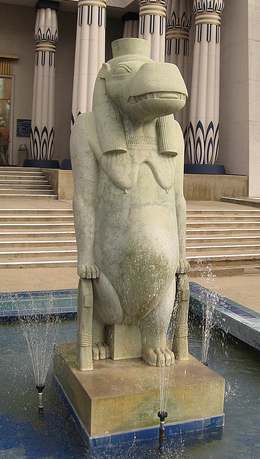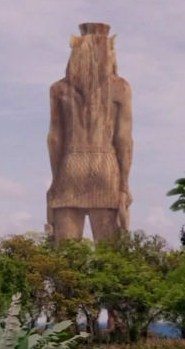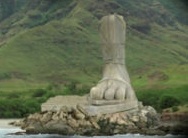Here’s Michael Emerson (who plays Ben) in an interview last month with the Washington Post:
Liz: Will we find out what the deal is with the four-toed statue?
Michael: You are going to learn more about the world from which that statue came. I don’t think we’re going to see the statue again in context, but maybe. You’ll certainly know from whence it is a relic.
He also repeats the claim I’ve seen before (most notably in a Wikipedia article), that Richard Alpert is not wearing eyeliner:
Liz: Is Nestor Carbonell — who plays Richard Alpert — wearing eyeliner?
Michael: No. But he has a kind of genetic beauty that is a rare thing in men or women. No, that’s what he looks like when he wakes up in the morning. It’s hard not to study his face and admire it.
Ha! But Alpert has a dark line that goes straight across the bottom of his lower lid! Was he really born with that, or is everyone who makes that claim just pulling our leg?
Also from the interview:
Liz: Well you’ve probably just put to rest several theories about Alpert being a transplant from ancient Egypt.
Michael: Ah. Well, hold that thought about Egypt. That’s all I’ll say.
So whether or not Alpert is from ancient Egypt, the statue may very well be.
Emerson also says that he has “some crackerjack scenes — epic, vintage Ben and John Locke coming up — in ways you would never expect.” That’s great! The Ben-Locke pairing is one of my favorites.
There is lots more in the interview, including Emerson’s thoughts on whether Ben is purely evil, or if he’s a good person doing whatever it takes to reach his goal, and what kind of roles Emerson would like to play in the future.












